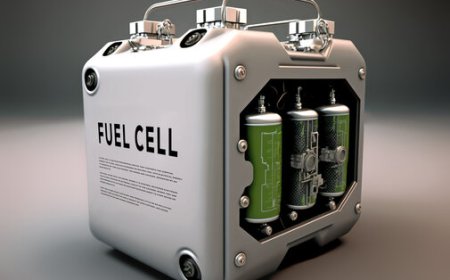Make In India Initiative
Launched in 2014, the Make In India Initiative supports innovation, infrastructure, and foreign direct investment, aiming to transform India into a global manufacturing hub.

Launched in September 2014, the Make in India Initiative is one of the most ambitious and transformative programs introduced by the Government of India. Its primary aim is to turn India into a global design and manufacturing powerhouse by attracting investments, encouraging innovation, boosting skill development, and building best-in-class infrastructure.
The Make in India Initiative is more than just a campaign; it is a movement to build confidence in India's capabilities, improve ease of doing business, and strengthen the countrys industrial base to generate jobs and economic growth.
Background: Why Make in India?
Before the Make in India Initiative, Indias manufacturing sector was underperforming in comparison to its potential. Despite having a large and youthful workforce, manufacturing contributed only around 1617% to India's GDP, whereas countries like China had much higher manufacturing-to-GDP ratios.
Global economic dynamics and rising labor costs in countries like China presented India with a unique opportunity to emerge as an alternative manufacturing destination. The Indian government recognized this and launched the Make in India Initiative to:
-
Boost domestic manufacturing
-
Attract foreign direct investment (FDI)
-
Strengthen infrastructure
-
Create jobs
-
Increase exports
-
Improve the business environment
Key Pillars of the Make in India Initiative
The Make in India Initiative is built on four key pillars:
1. New Processes
The initiative focused on improving the ease of doing business through faster clearances, minimal red tape, online application systems, and transparent policies. It encouraged the use of digital platforms like the Goods and Services Tax (GST) portal, e-biz, and online labor law compliance.
2. New Infrastructure
Under Make in India, efforts were made to upgrade industrial corridors, smart cities, logistics parks, and dedicated freight corridors. These infrastructure investments aim to create a conducive environment for manufacturing and exports.
3. New Sectors
The initiative initially identified 25 priority sectors such as automobiles, textiles, defense manufacturing, aviation, chemicals, pharmaceuticals, food processing, renewable energy, and electronics. These sectors were chosen based on their capacity for growth and employment generation.
4. New Mindset
One of the most important shifts brought about by the Make in India Initiative was changing the role of the government from a regulator to a facilitator. It emphasized cooperative federalism, innovation, and entrepreneurship.
Achievements of the Make in India Initiative
Since its inception, the Make in India Initiative has made measurable progress across several areas:
1. Foreign Direct Investment (FDI) Growth
India witnessed a record inflow of FDI during the initial years of the initiative. Sectors like automobiles, telecom, electronics, and renewable energy saw significant international interest. According to government data, India received over $500 billion in FDI between 2014 and 2023.
2. Rise in Manufacturing Capacity
Various global and domestic companies have set up or expanded their manufacturing bases in India. For example:
-
Apple began manufacturing iPhones in India
-
Samsung opened its worlds largest mobile manufacturing plant in Noida
-
Foxconn, Tata Group, and Oppo have made major investments in electronics manufacturing
3. Growth in Electronics Manufacturing
India has become the second-largest mobile phone manufacturer in the world. The Production Linked Incentive (PLI) scheme, introduced to complement the Make in India Initiative, has further fueled growth in electronics, pharmaceuticals, and automobile sectors.
4. Boost to Job Creation
The initiative has created direct and indirect employment opportunities across various industries. The automotive and textiles sectors, in particular, have seen a surge in workforce demand.
5. Increased Global Competitiveness
India improved its ranking in the World Banks Ease of Doing Business index, moving from 142nd in 2014 to 63rd in 2019, showcasing major reforms in regulatory environments and business policies.
Flagship Projects under Make in India
Several large-scale projects have been initiated to support the Make in India Initiative, including:
-
Delhi-Mumbai Industrial Corridor (DMIC)
-
Smart Cities Mission
-
Bharatmala and Sagarmala Projects
-
Dedicated Freight Corridors (DFC)
-
UDAN (Ude Desh Ka Aam Nagrik) Boosting regional air connectivity and aviation manufacturing
-
Startup India & Standup India Complementary programs promoting innovation and entrepreneurship
These initiatives create an enabling ecosystem for manufacturing and services to flourish.
Challenges Faced by the Make in India Initiative
Despite the significant progress, the Make in India Initiative has faced some challenges:
1. Infrastructure Gaps
While investments have been made, India still needs massive infrastructure upgrades to match global manufacturing standards in power supply, transportation, and logistics.
2. Complex Labor Laws
Though labor law reforms have been initiated, implementation remains a bottleneck in many states.
3. High Cost of Capital
MSMEs and manufacturing startups often face difficulty in accessing affordable credit for scaling operations.
4. Global Competition
India faces stiff competition from other low-cost manufacturing hubs like Vietnam, Indonesia, and Bangladesh, particularly in textiles and electronics.
Future of Make in India: Towards Atmanirbhar Bharat
The Make in India Initiative has now evolved to align with the larger vision of Atmanirbhar Bharat (Self-Reliant India). The focus is not just on assembling products in India but on designing, innovating, and manufacturing complete value chains domestically.
The PLI (Production Linked Incentive) schemes, Digital India, and Skill India are closely linked with Make in India to drive long-term competitiveness. Green manufacturing, digital infrastructure, and sustainable supply chains are set to become future growth drivers.
Success Stories of Make in India
Numerous Indian states have become manufacturing powerhouses under the Make in India Initiative:
-
Tamil Nadu: Automotive, electronics, and textiles
-
Gujarat: Petrochemicals, pharmaceuticals, and ports
-
Maharashtra: IT, electronics, and aviation
-
Uttar Pradesh: Mobile phones, defense, and MSMEs
These state-level success stories reinforce Indias ability to become a global production hub with strong regional specialization.
Conclusion
The Make in India Initiative is more than a government sloganits a blueprint for economic transformation. By promoting local manufacturing, encouraging foreign investment, and improving ease of doing business, it aims to reshape Indias economic landscape.
From becoming a global hub for mobile phone production to expanding capabilities in defense, aerospace, and renewable energy, the initiative has laid a solid foundation. However, continued reforms, strong policy implementation, and industry-government collaboration will be key to realizing the full potential of Make in India.
As India aspires to become a $5 trillion economy, Make in India will remain at the heart of its industrial and economic policiesdriving innovation, job creation, and self-reliance for a stronger, more resilient India.


























